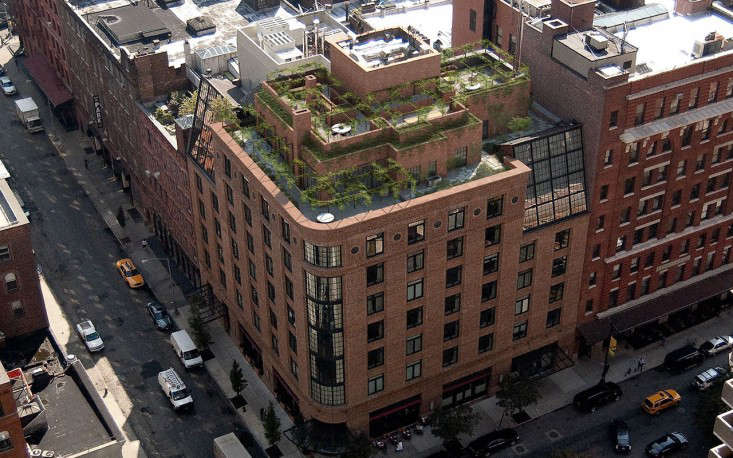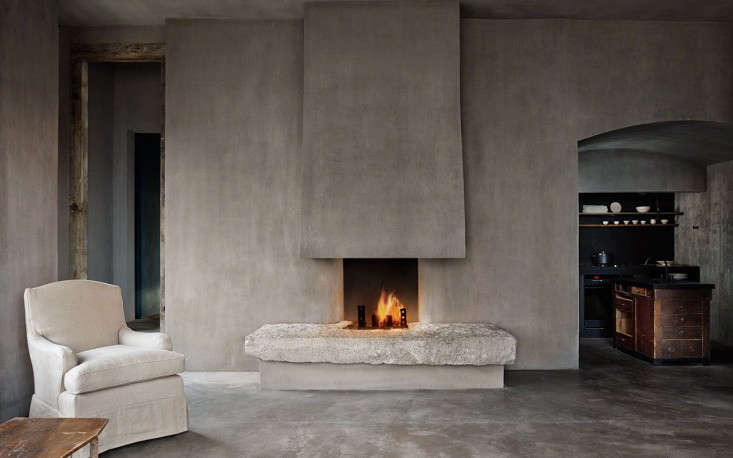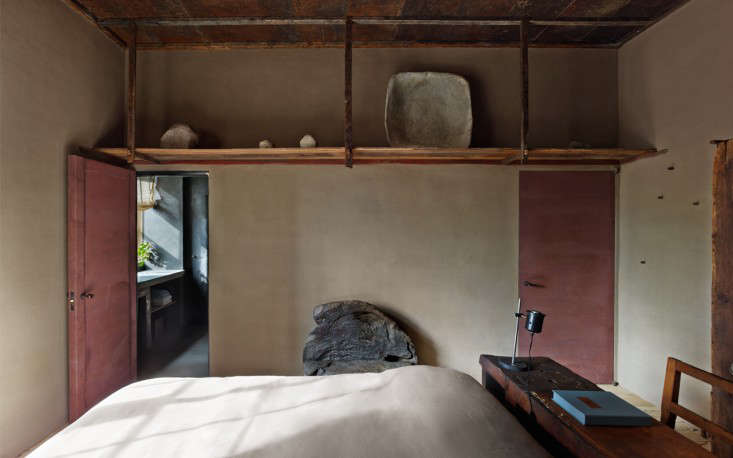Robert De Niro fell under the spell of Belgian design impresario Axel Vervoordt after discovering his work at the NYC Winter Antiques Show (others who have succumbed include Sting and Kanye West, as well as legions of deep-pocketed, under-the-radar patrons). So when De Niro was casting around for design ideas for his 2,800-square-foot penthouse suite perched atop New York’s Greenwich Hotel (which he co-owns with Ira Drukier), he made the pilgrimage to Vervoordt’s 12th-century castle near Antwerp to discuss the project.
The result is the several-years-in-the-making TriBeCa Penthouse, unveiled last spring, an apotheosis of the rough-yet-refined Belgian look that has captivated the design world in the last decade (Gary Friedman of Restoration Hardware, are you reading this?). Vervoordt and his team, in collaboration with Japanese architect Tatsuro Miki, have created a calming sanctuary based on the principles of wabi-sabi, using a refined palette of scavenged architectural elements, luxe textures, and muted colors. Breathe deep.
Photography courtesy of The Greenwich Hotel.

Above: The penthouse suite, which floats atop the Greenwich Hotel on the corner of Greenwich Street and North Moore Street, is surrounded by a bi-level, 4,000-square-foot roof garden.

Above: In the living room, the fireplace is a focal point; the iron fire grate is fashioned from joist hangers that, in a previous life, served as the original structure of the Louvre, in Paris.
Above: Vervoordt is adept at mixing primitive elements (a rough-hewn table) with luxe pieces (a green velvet chair).
Above: Vervoordt designed the drawing room, with its small oculus window, as a meditation space. The glass doors lead out to the gardens on the lower terrace.
Above: In the master bedroom, a 19th-century walnut tabletop is repurposed as a headboard.
Above: A 17th-century stone water trough, weathered and smoothed by time serves as a soaking tub with a companion fireplace in the master bathroom.
Above: In the guest room, a sofa is made of two twin beds. The ceiling is lined with wood planks salvaged from the nearby Union Square Farmers’ Market.

Above: The two smaller bedrooms are connected by a bath.

Above: In the second bedroom, a display shelf is made of reclaimed wood and oxidizing metal.
Above: A two-story hall with atrium connects the downstairs living spaces. The skylight in the entry was assembled from reclaimed beams sourced from upstate New York.
Above: On the roof terrace, multiple seating and dining areas sit beneath wisteria-wrapped pergolas.
Above: Hanging lanterns in the shapes of gourds beside the spa pool were fashioned from the original copper roofing of the hotel building.
Above: Lush greenery surrounds the penthouse.
Above: A detail of the wabi-sabi garden.
In Required Reading, we recommend two books that explore and explain the underpinnings of wabi-sabi–Wabi Inspiration by Axel Vervoordt and Wabi-Sabi by Leonard Koren.
On Gardenista, visit a Hidden Japanese Garden.
